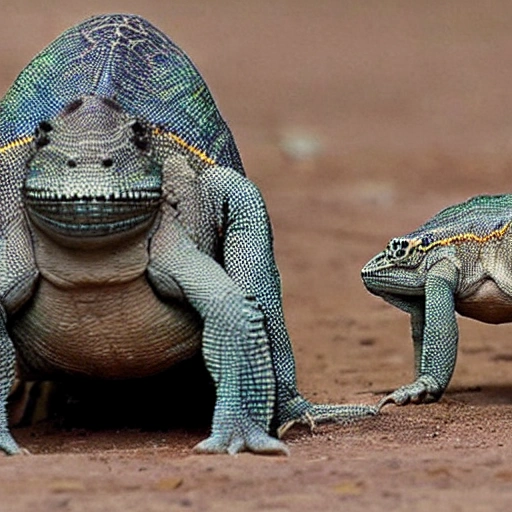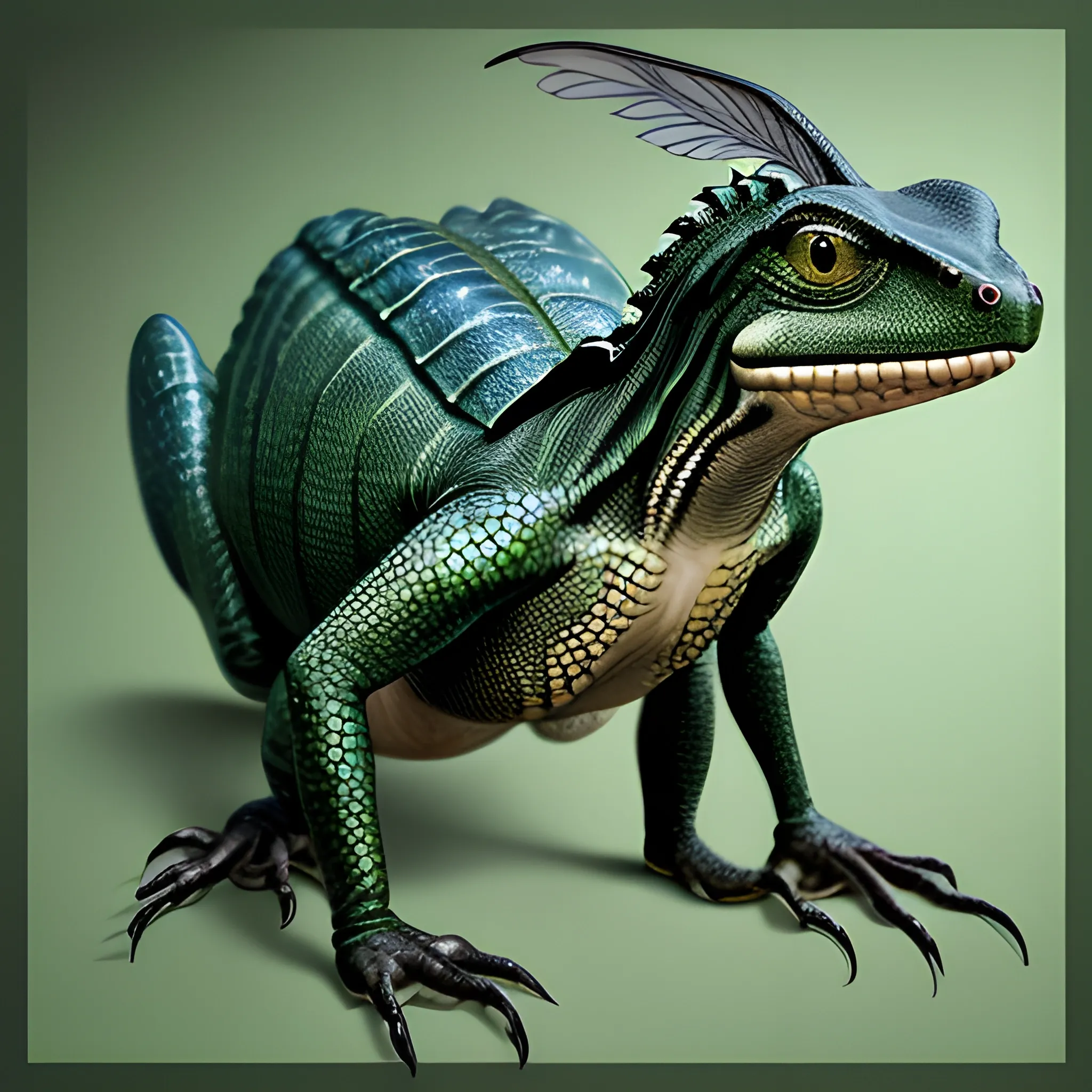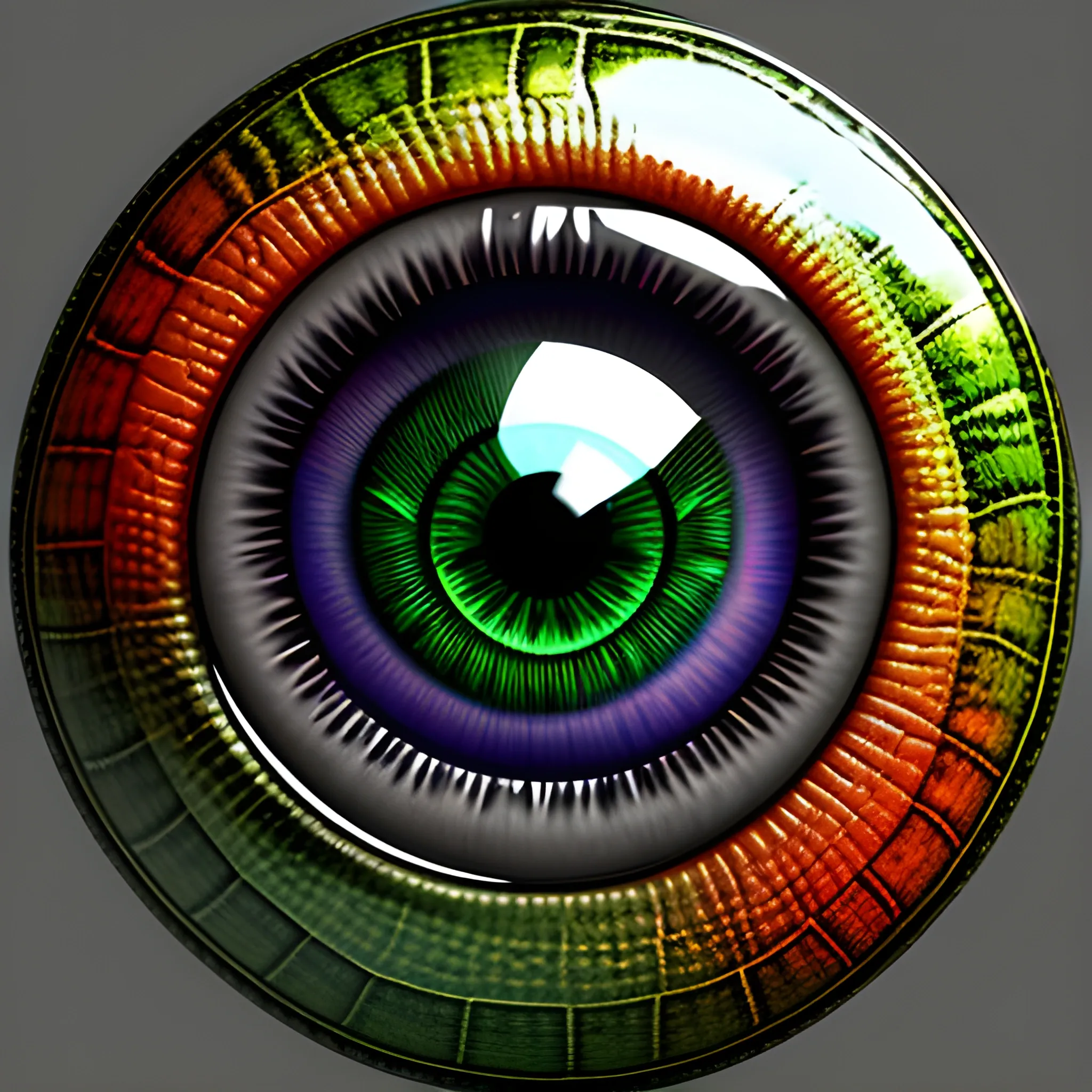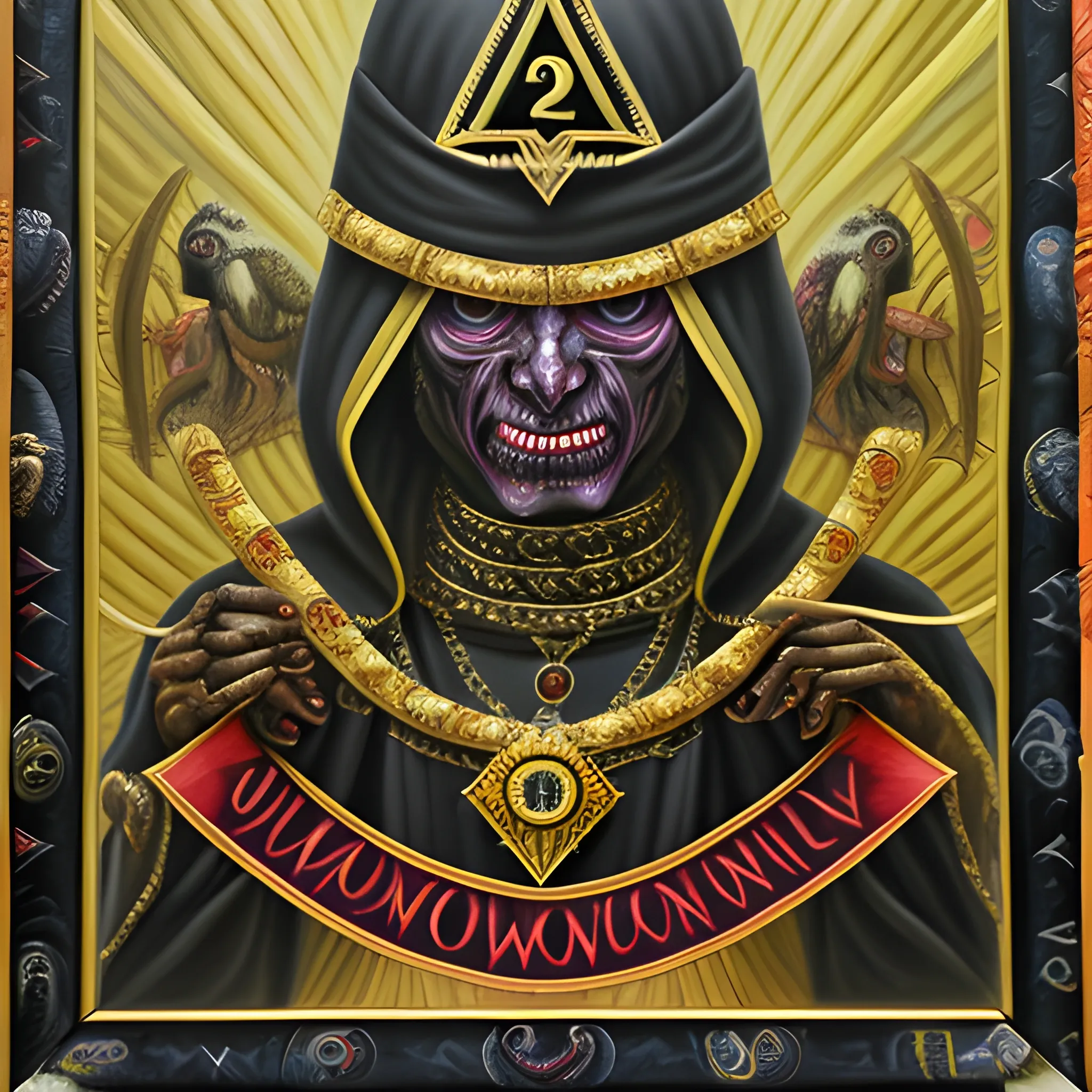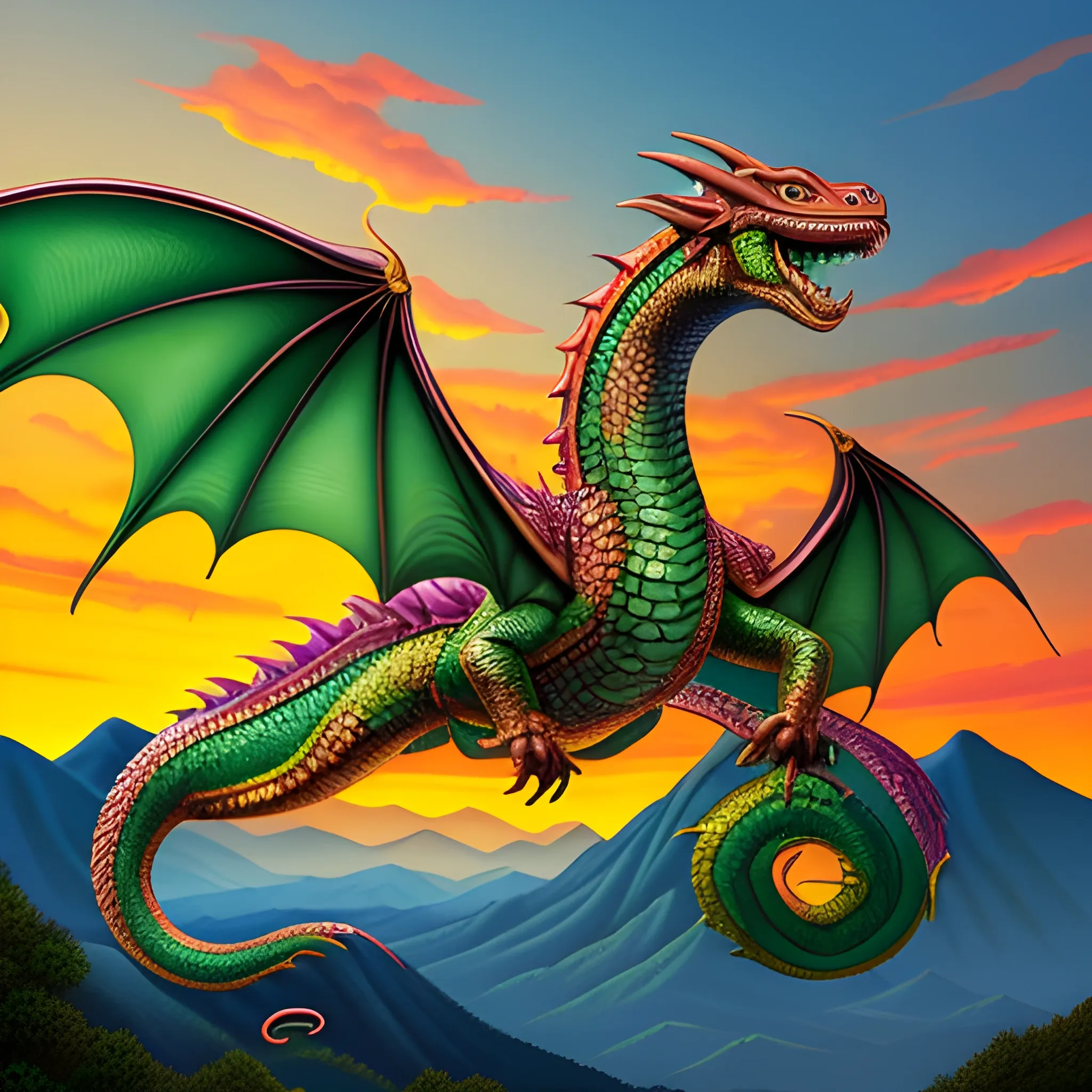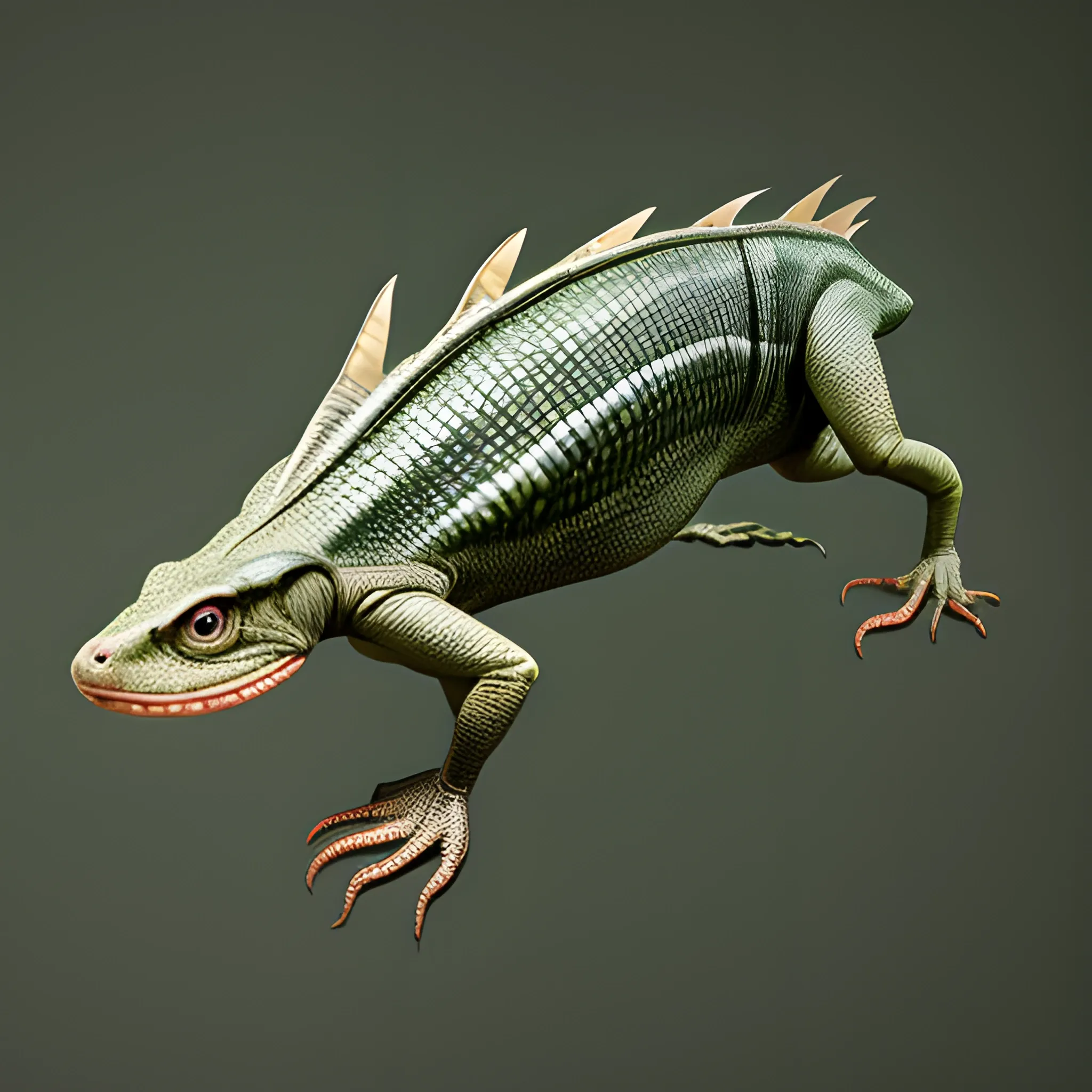Search Results for reptile
Explore AI generated designs, images, art and prompts by top community artists and designers.
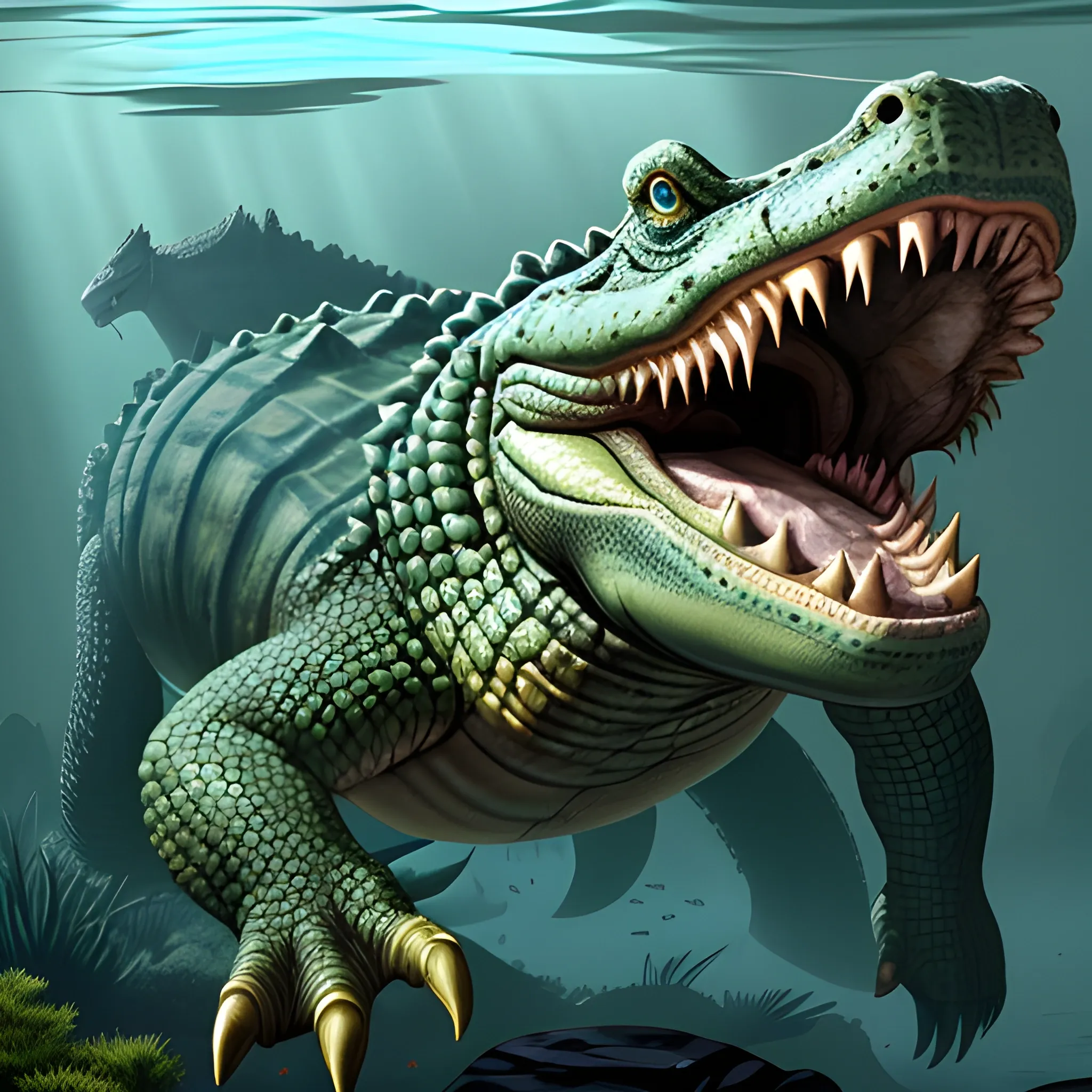
Appearance: The Giant Crocodile is an enormous and monstrous reptile , dwarfing its smaller counterpart in size and power. It has a massive body covered in thick and rugged scales that can range from dark greens to deep browns , perfectly camouflaging it in its aquatic habitat. Its long and powerful tail serves as a formidable weapon , enabling it to swim swiftly and strike with devastating force. The Giant Crocodile's eyes gleam with an intelligence and predatory instinct that sets it apart from ordinary creatures. Features: The Giant Crocodile is a colossal apex predator , boasting immense strength and resilience. Its jaws are filled with rows of sharp teeth , capable of crushing bones and armor with ease. Unlike its smaller kin , the Giant Crocodile is fully adapted for a purely aquatic lifestyle , rarely venturing onto land except to bask in the sun or establish dominance in its territory. Habitat: Giant Crocodiles prefer large bodies of freshwater , such as expansive rivers , deep lakes , and marshlands. They are territorial creatures , claiming vast stretches of water as their hunting grounds. In your DND world , they could inhabit mysterious swamps or hidden lagoons , guarding ancient secrets or treasures. Behavior: As ambush predators , Giant Crocodiles are masters of surprise attacks. They remain mostly submerged , with only their eyes and nostrils visible above the water's surface. When potential prey ventures too close , the Giant Crocodile strikes with astonishing speed and strength , dragging victims underwater to drown or consume. Role in the World: In your DND world , Giant Crocodiles could be legendary creatures , feared and respected by both locals and adventurers alike. They might be considered as guardians of ancient temples or revered as avatars of primordial nature. Druids and rangers might see them as symbols of untamed and primal power. Encountering a Giant Crocodile in the wild is a dangerous and potentially deadly event for adventurers. Its size and power make it an incredibly challenging opponent , even for a well-prepared party. Players must exercise extreme caution when navigating bodies of water known to be inhabited by Giant Crocodiles , as these creatures can deliver swift and lethal attacks. The presence of Giant Crocodiles in your campaign can create an atmosphere of danger and trepidation when exploring swampy and aquatic environments. Players will need to be constantly vigilant and employ strategic thinking to avoid becoming victims of these monstrous reptiles. Crossing waterways or searching for hidden artifacts in areas known to be Giant Crocodile territory can create a sense of high stakes and urgency in your DND world. ,
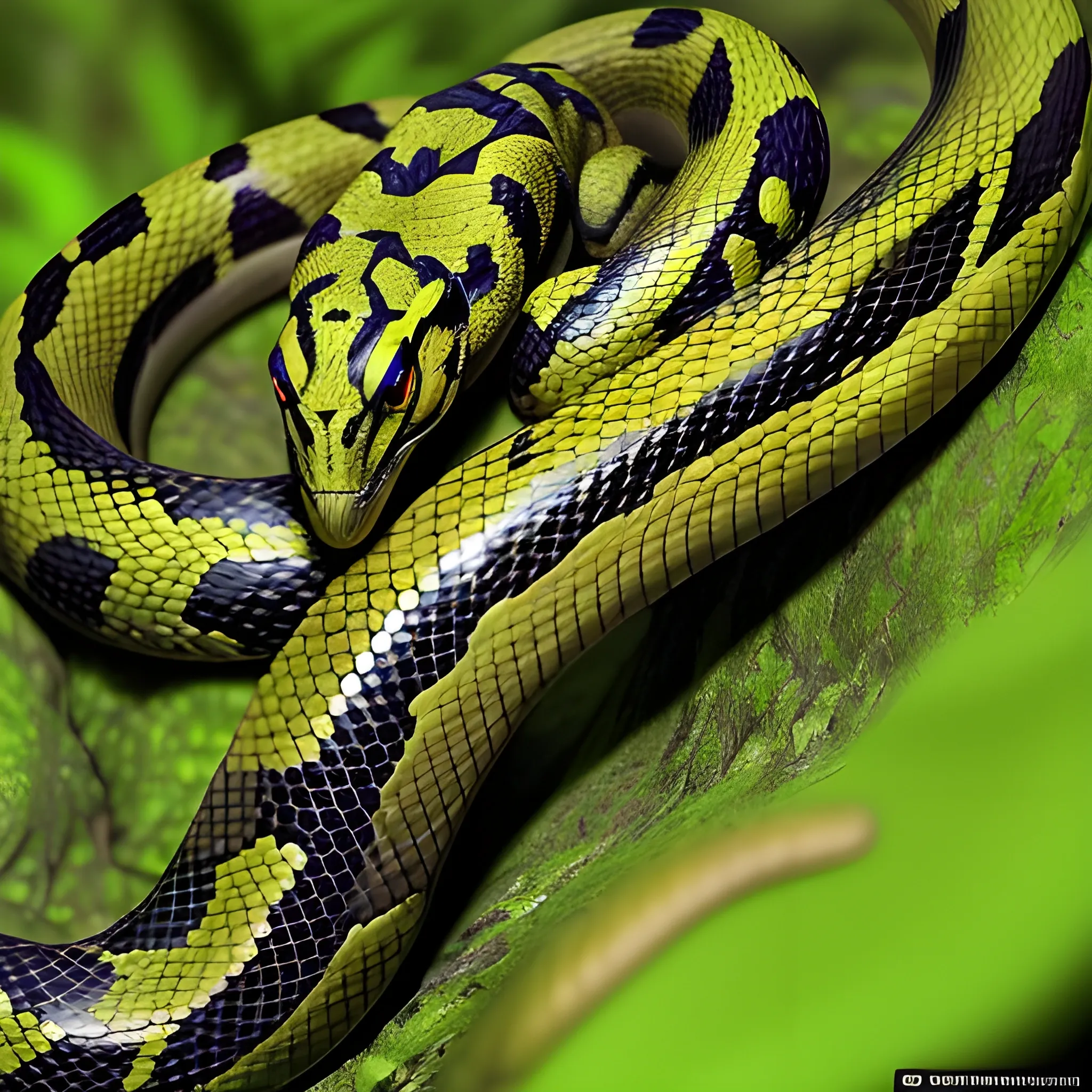
Appearance: The Poisonous Snake is a small to medium-sized reptile with a slender body and a distinctive pattern of scales. Its colors can vary widely , from vibrant and striking patterns to more muted earth tones , helping it blend into its natural surroundings. The snake's head is triangular , and it has a pair of fangs at the front of its mouth , through which it delivers its venom. Features: The Poisonous Snake is known for its venomous bite , which it uses to incapacitate its prey and defend itself from threats. Its venom can vary in potency , from causing mild discomfort to being deadly , depending on the species. While not as powerful as the venom of more dangerous creatures , the Poisonous Snake's bite can still cause considerable harm to unwary adventurers. Habitat: Poisonous Snakes can be found in a wide range of environments , from dense jungles and forests to dry deserts and grasslands. They are highly adaptable creatures and can thrive in various conditions , making them a common sight in untamed wilderness areas. Behavior: The Poisonous Snake is a stealthy predator , relying on its camouflage and patience to ambush its prey. It strikes quickly and accurately , using its venom to immobilize and begin the process of consuming its victim. Poisonous Snakes are generally non-aggressive towards larger creatures , preferring to flee rather than confront a potential threat. Role in the World: In your DND world , Poisonous Snakes could serve as common dangers in the wild , particularly in regions where adventurers explore untamed territories. Druids and rangers might have a connection with these creatures , viewing them as part of the natural balance. Encountering a Poisonous Snake in the wild can be a common and potentially hazardous event for adventurers. While they are generally not aggressive , they may strike if they feel threatened or cornered. Players might need to exercise caution and use skills such as animal handling or survival to avoid confrontations with these venomous reptiles. If adventurers do find themselves bitten , they must act quickly to counteract the effects of the venom and avoid more serious consequences. The presence of Poisonous Snakes in your campaign adds an element of realism and danger to the wilderness. Players will need to be vigilant and watchful during their travels , as the risk of encountering these venomous creatures is ever-present. Poisonous Snakes can also serve as a minor but meaningful challenge , especially for lower-level adventurers , teaching them the importance of preparation and awareness in the untamed wilderness. ,
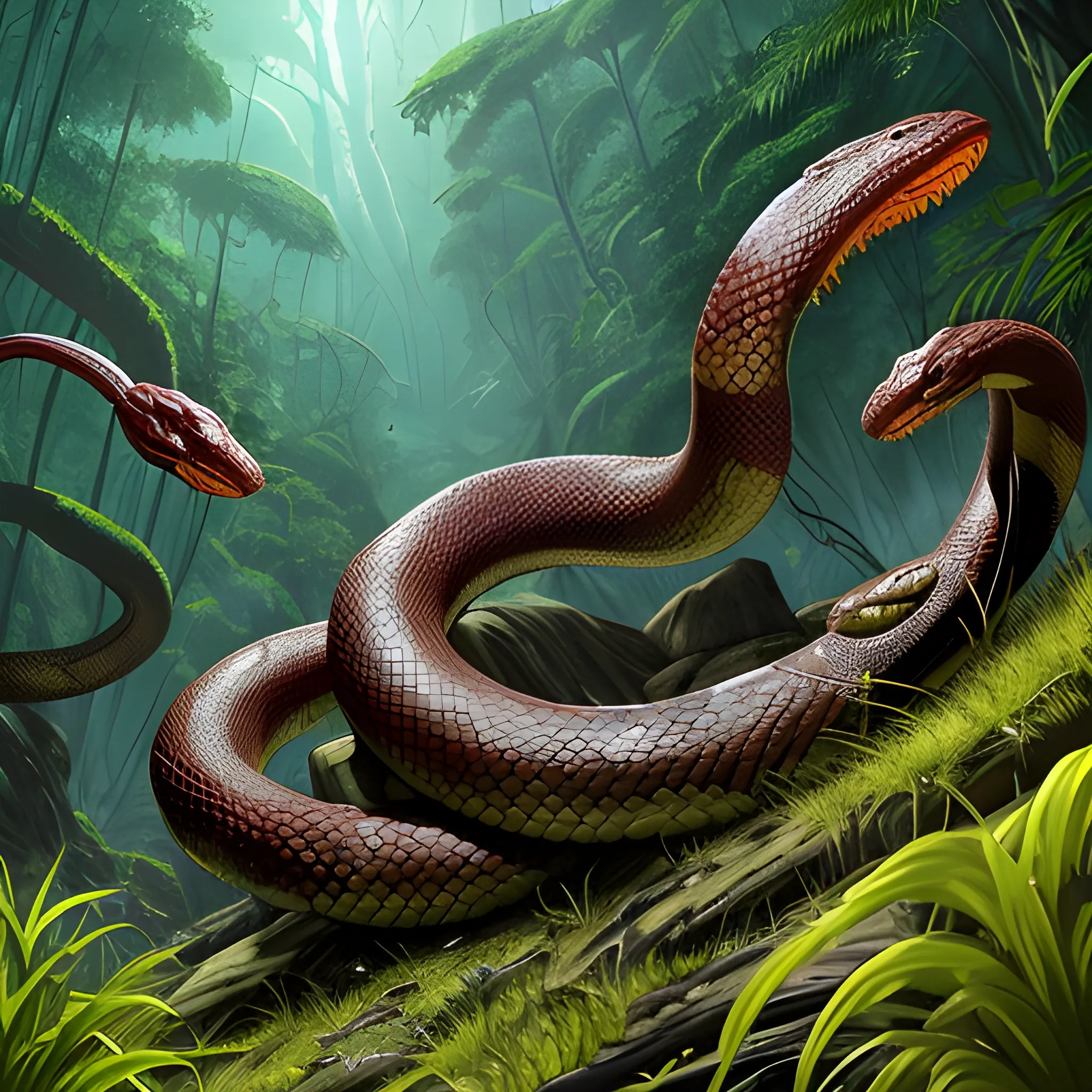
Appearance: The Giant Poisonous Snake is a massive and fearsome reptile , much larger than its smaller counterpart. It has a thick and muscular body , and its scales can have a range of colors , from mottled greens and browns to striking patterns that allow it to blend in with its surroundings. The snake's head is large and triangular , with a pair of long , hollow fangs through which it delivers its potent venom. Features: The Giant Poisonous Snake is known for its deadly venomous bite , which it uses to incapacitate and devour prey. Its venom is significantly more potent than that of its smaller cousin , making it a formidable threat to adventurers. A bite from a Giant Poisonous Snake can cause severe pain , paralysis , or even death , depending on the creature's size and resilience. Habitat: Giant Poisonous Snakes typically inhabit dense jungles , dark swamps , and other untamed wilderness areas. They prefer warm and humid environments and may be found in hidden lairs or lurking near water sources. In your DND world , they could guard sacred sites or serve as minions of malevolent beings. Behavior: Like their smaller counterparts , Giant Poisonous Snakes are stealthy predators , using their large size and camouflage to ambush prey. They strike swiftly and accurately , delivering their venom to immobilize their victims before consuming them. While generally non-aggressive , they may attack if they feel threatened or if potential prey ventures too close. Role in the World: In your DND world , Giant Poisonous Snakes could be apex predators in their habitat , feared and respected by other creatures. They might be associated with ancient legends or guarded by nature spirits. Druids and rangers might view them as symbols of balance and the wild's dangers. Encountering a Giant Poisonous Snake in the wild is a perilous and potentially deadly event for adventurers. The snake's venomous bite can have severe consequences , making quick thinking and decisive action essential to survive an encounter. Players must be well-prepared with protective spells , antidotes , or other means to counteract the venom's effects. The presence of Giant Poisonous Snakes in your campaign can create an atmosphere of danger and suspense , particularly in jungles or other untamed regions. Players will need to be vigilant and cautious during their explorations , as the looming threat of these massive venomous serpents adds an element of peril to their adventures. Giant Poisonous Snakes can serve as significant challenges for higher-level adventurers , reminding them of the dangers that still lurk even in seemingly familiar environments. ,

Appearance: The Constrictor Snake is a long and powerful reptile , known for its impressive ability to squeeze and suffocate its prey. It typically has a slender and muscular body , covered in scales that can vary in color from dull brown and green to vibrant patterns. Constrictor snakes have sharp , recurved teeth designed to grip and hold their prey as they constrict it. They are typically non-venomous and rely on their powerful constriction to subdue their victims. Features: The Constrictor Snake is a stealthy predator , relying on its keen senses to locate prey and ambush it. Its long , forked tongue allows it to taste the air and track potential food sources. Once it catches its prey , the snake coils around it , using its powerful muscles to squeeze and immobilize it. This method of hunting allows the snake to subdue prey larger than its mouth , as it doesn't need to swallow the victim whole. Habitat: Constrictor Snakes are found in a wide range of environments , from dense jungles and swamps to arid deserts and grasslands. They prefer warm climates and can be active both during the day and at night. In your DND world , they might inhabit untamed wilderness areas or hidden lairs , waiting for prey to pass by. Behavior: Constrictor snakes are generally solitary creatures , except during mating season. They are non-aggressive toward larger creatures , preferring to avoid confrontation when possible. When hunting , they rely on stealth and patience to surprise their prey. Their constriction technique is highly effective , allowing them to overpower and devour a variety of creatures. Role in the World: In your DND world , Constrictor Snakes could be a common predator in certain regions , often preying on small to medium-sized creatures. Druids and rangers might have a connection with these snakes , viewing them as symbols of balance in the natural world. Encountering a Constrictor Snake in the wild could be a challenging and potentially dangerous situation for adventurers. While they are not typically aggressive toward larger creatures , they may perceive humanoids as potential threats if they feel cornered or provoked. Players might need to exercise caution and use appropriate skills , such as animal handling or survival , to safely navigate through areas where these snakes are known to dwell. If adventurers find themselves facing a Constrictor Snake , they must be prepared for a battle of strength and wits , as the snake's constricting abilities can be deadly if not dealt with carefully. ,
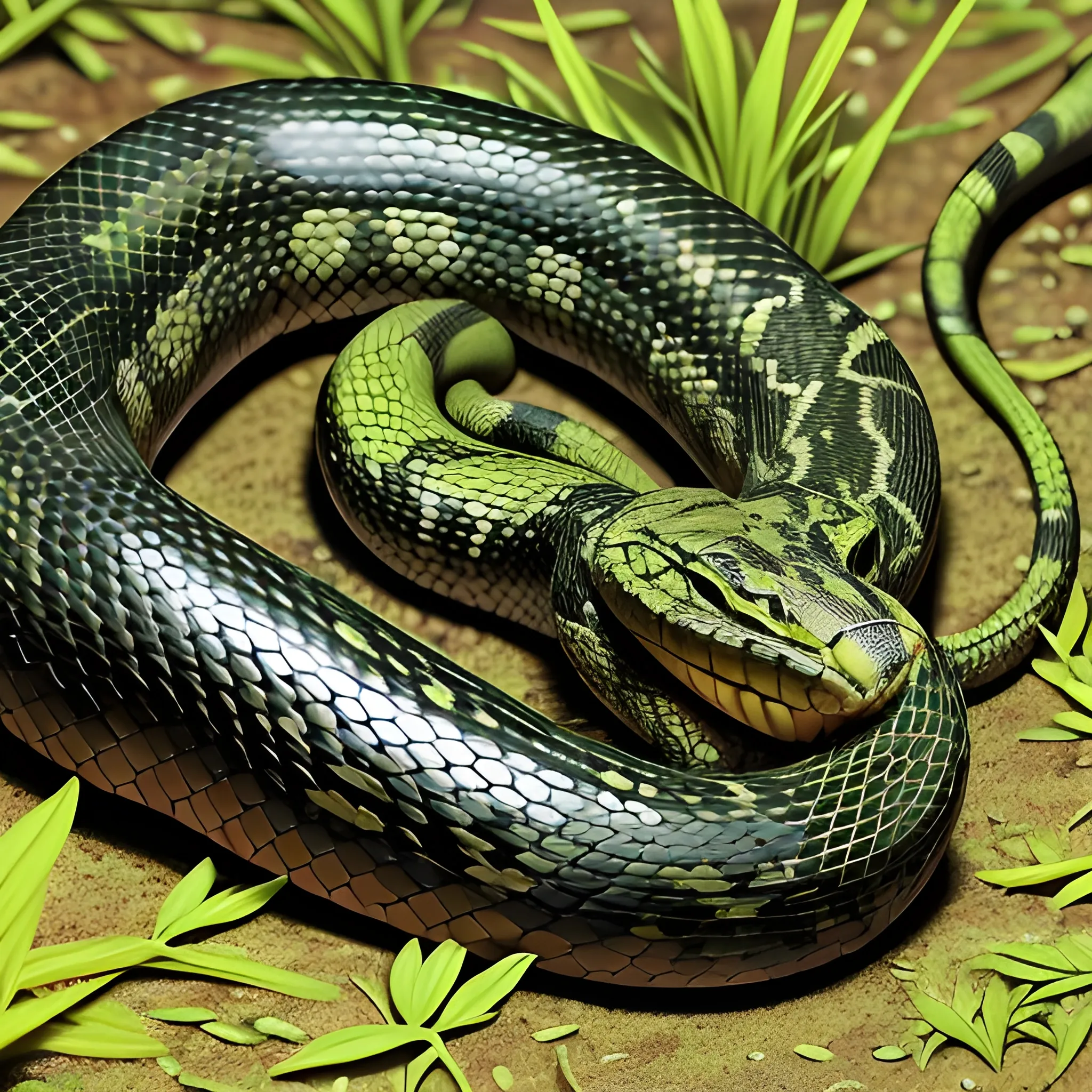
Appearance: The Poisonous Snake is a small to medium-sized reptile with a slender body and a distinctive pattern of scales. Its colors can vary widely , from vibrant and striking patterns to more muted earth tones , helping it blend into its natural surroundings. The snake's head is triangular , and it has a pair of fangs at the front of its mouth , through which it delivers its venom. Features: The Poisonous Snake is known for its venomous bite , which it uses to incapacitate its prey and defend itself from threats. Its venom can vary in potency , from causing mild discomfort to being deadly , depending on the species. While not as powerful as the venom of more dangerous creatures , the Poisonous Snake's bite can still cause considerable harm to unwary adventurers. Habitat: Poisonous Snakes can be found in a wide range of environments , from dense jungles and forests to dry deserts and grasslands. They are highly adaptable creatures and can thrive in various conditions , making them a common sight in untamed wilderness areas. Behavior: The Poisonous Snake is a stealthy predator , relying on its camouflage and patience to ambush its prey. It strikes quickly and accurately , using its venom to immobilize and begin the process of consuming its victim. Poisonous Snakes are generally non-aggressive towards larger creatures , preferring to flee rather than confront a potential threat. Role in the World: In your DND world , Poisonous Snakes could serve as common dangers in the wild , particularly in regions where adventurers explore untamed territories. Druids and rangers might have a connection with these creatures , viewing them as part of the natural balance. Encountering a Poisonous Snake in the wild can be a common and potentially hazardous event for adventurers. While they are generally not aggressive , they may strike if they feel threatened or cornered. Players might need to exercise caution and use skills such as animal handling or survival to avoid confrontations with these venomous reptiles. If adventurers do find themselves bitten , they must act quickly to counteract the effects of the venom and avoid more serious consequences. The presence of Poisonous Snakes in your campaign adds an element of realism and danger to the wilderness. Players will need to be vigilant and watchful during their travels , as the risk of encountering these venomous creatures is ever-present. Poisonous Snakes can also serve as a minor but meaningful challenge , especially for lower-level adventurers , teaching them the importance of preparation and awareness in the untamed wilderness. ,
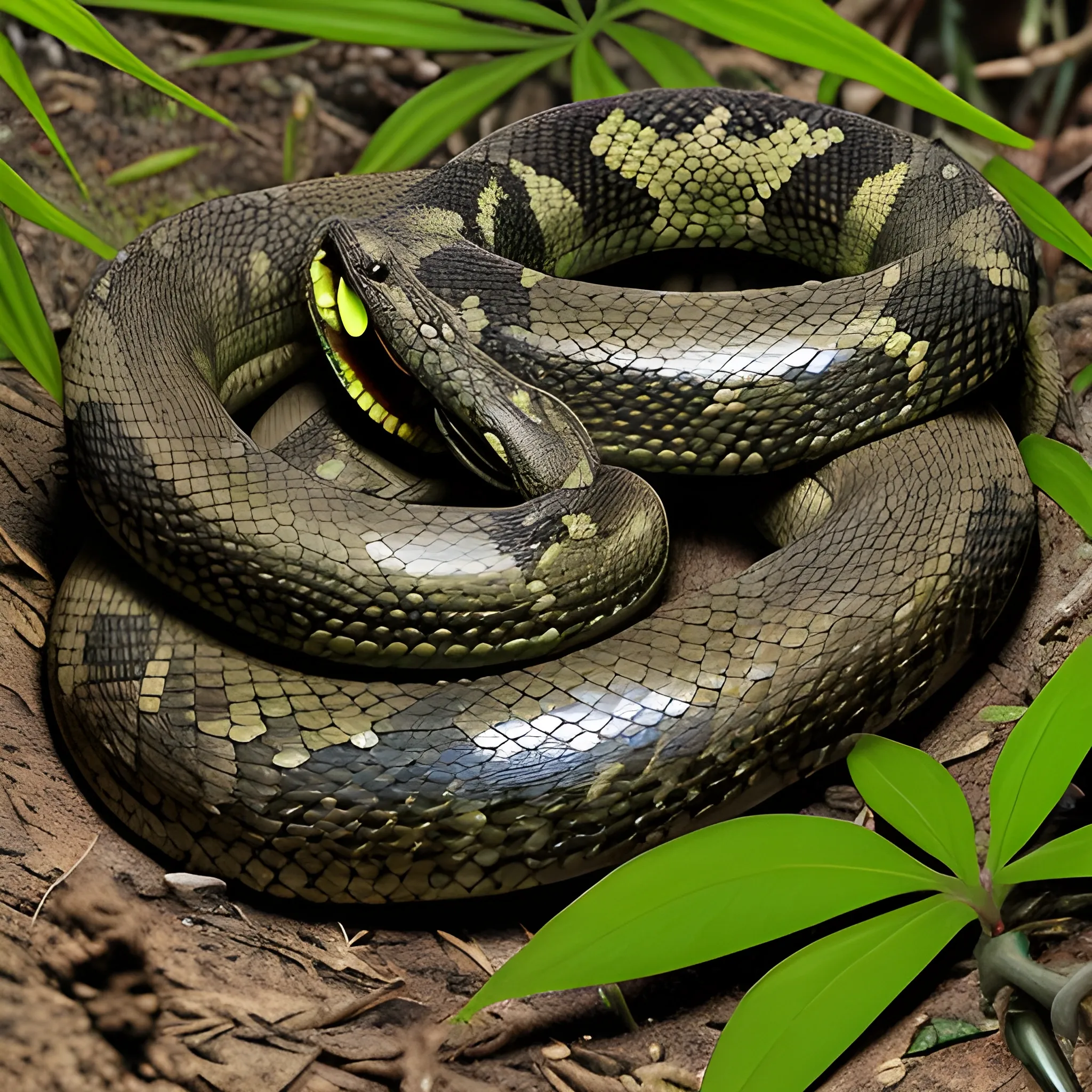
Appearance: The Poisonous Snake is a small to medium-sized reptile with a slender body and a distinctive pattern of scales. Its colors can vary widely , from vibrant and striking patterns to more muted earth tones , helping it blend into its natural surroundings. The snake's head is triangular , and it has a pair of fangs at the front of its mouth , through which it delivers its venom. Features: The Poisonous Snake is known for its venomous bite , which it uses to incapacitate its prey and defend itself from threats. Its venom can vary in potency , from causing mild discomfort to being deadly , depending on the species. While not as powerful as the venom of more dangerous creatures , the Poisonous Snake's bite can still cause considerable harm to unwary adventurers. Habitat: Poisonous Snakes can be found in a wide range of environments , from dense jungles and forests to dry deserts and grasslands. They are highly adaptable creatures and can thrive in various conditions , making them a common sight in untamed wilderness areas. Behavior: The Poisonous Snake is a stealthy predator , relying on its camouflage and patience to ambush its prey. It strikes quickly and accurately , using its venom to immobilize and begin the process of consuming its victim. Poisonous Snakes are generally non-aggressive towards larger creatures , preferring to flee rather than confront a potential threat. Role in the World: In your DND world , Poisonous Snakes could serve as common dangers in the wild , particularly in regions where adventurers explore untamed territories. Druids and rangers might have a connection with these creatures , viewing them as part of the natural balance. Encountering a Poisonous Snake in the wild can be a common and potentially hazardous event for adventurers. While they are generally not aggressive , they may strike if they feel threatened or cornered. Players might need to exercise caution and use skills such as animal handling or survival to avoid confrontations with these venomous reptiles. If adventurers do find themselves bitten , they must act quickly to counteract the effects of the venom and avoid more serious consequences. The presence of Poisonous Snakes in your campaign adds an element of realism and danger to the wilderness. Players will need to be vigilant and watchful during their travels , as the risk of encountering these venomous creatures is ever-present. Poisonous Snakes can also serve as a minor but meaningful challenge , especially for lower-level adventurers , teaching them the importance of preparation and awareness in the untamed wilderness. ,
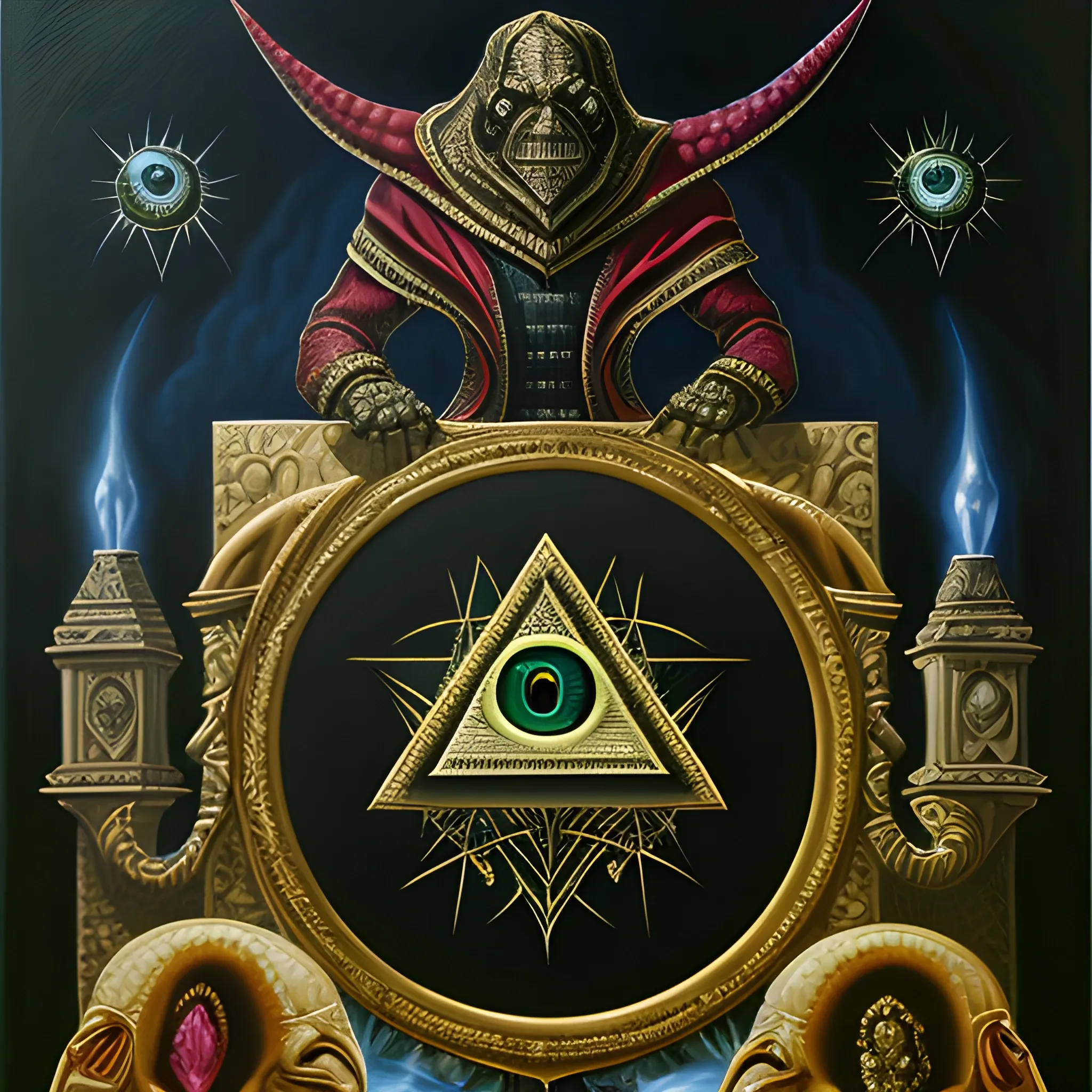
illuminati , Black nobility , usury , new world order , reptile , sion , earth , elite , Oil Painting ,
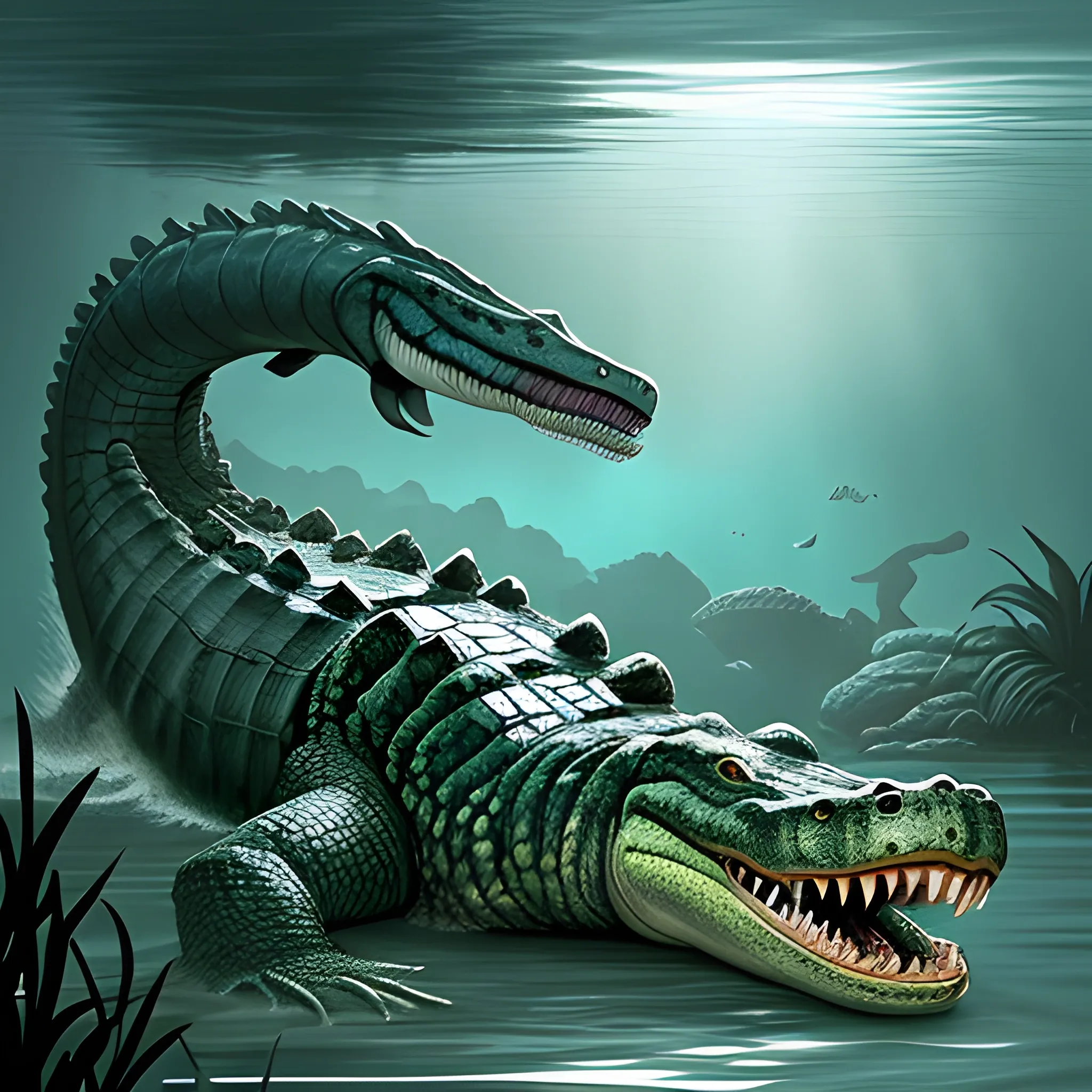
Appearance: The Giant Crocodile is an enormous and monstrous reptile , dwarfing its smaller counterpart in size and power. It has a massive body covered in thick and rugged scales that can range from dark greens to deep browns , perfectly camouflaging it in its aquatic habitat. Its long and powerful tail serves as a formidable weapon , enabling it to swim swiftly and strike with devastating force. The Giant Crocodile's eyes gleam with an intelligence and predatory instinct that sets it apart from ordinary creatures. Features: The Giant Crocodile is a colossal apex predator , boasting immense strength and resilience. Its jaws are filled with rows of sharp teeth , capable of crushing bones and armor with ease. Unlike its smaller kin , the Giant Crocodile is fully adapted for a purely aquatic lifestyle , rarely venturing onto land except to bask in the sun or establish dominance in its territory. Habitat: Giant Crocodiles prefer large bodies of freshwater , such as expansive rivers , deep lakes , and marshlands. They are territorial creatures , claiming vast stretches of water as their hunting grounds. In your DND world , they could inhabit mysterious swamps or hidden lagoons , guarding ancient secrets or treasures. Behavior: As ambush predators , Giant Crocodiles are masters of surprise attacks. They remain mostly submerged , with only their eyes and nostrils visible above the water's surface. When potential prey ventures too close , the Giant Crocodile strikes with astonishing speed and strength , dragging victims underwater to drown or consume. Role in the World: In your DND world , Giant Crocodiles could be legendary creatures , feared and respected by both locals and adventurers alike. They might be considered as guardians of ancient temples or revered as avatars of primordial nature. Druids and rangers might see them as symbols of untamed and primal power. Encountering a Giant Crocodile in the wild is a dangerous and potentially deadly event for adventurers. Its size and power make it an incredibly challenging opponent , even for a well-prepared party. Players must exercise extreme caution when navigating bodies of water known to be inhabited by Giant Crocodiles , as these creatures can deliver swift and lethal attacks. The presence of Giant Crocodiles in your campaign can create an atmosphere of danger and trepidation when exploring swampy and aquatic environments. Players will need to be constantly vigilant and employ strategic thinking to avoid becoming victims of these monstrous reptiles. Crossing waterways or searching for hidden artifacts in areas known to be Giant Crocodile territory can create a sense of high stakes and urgency in your DND world. ,
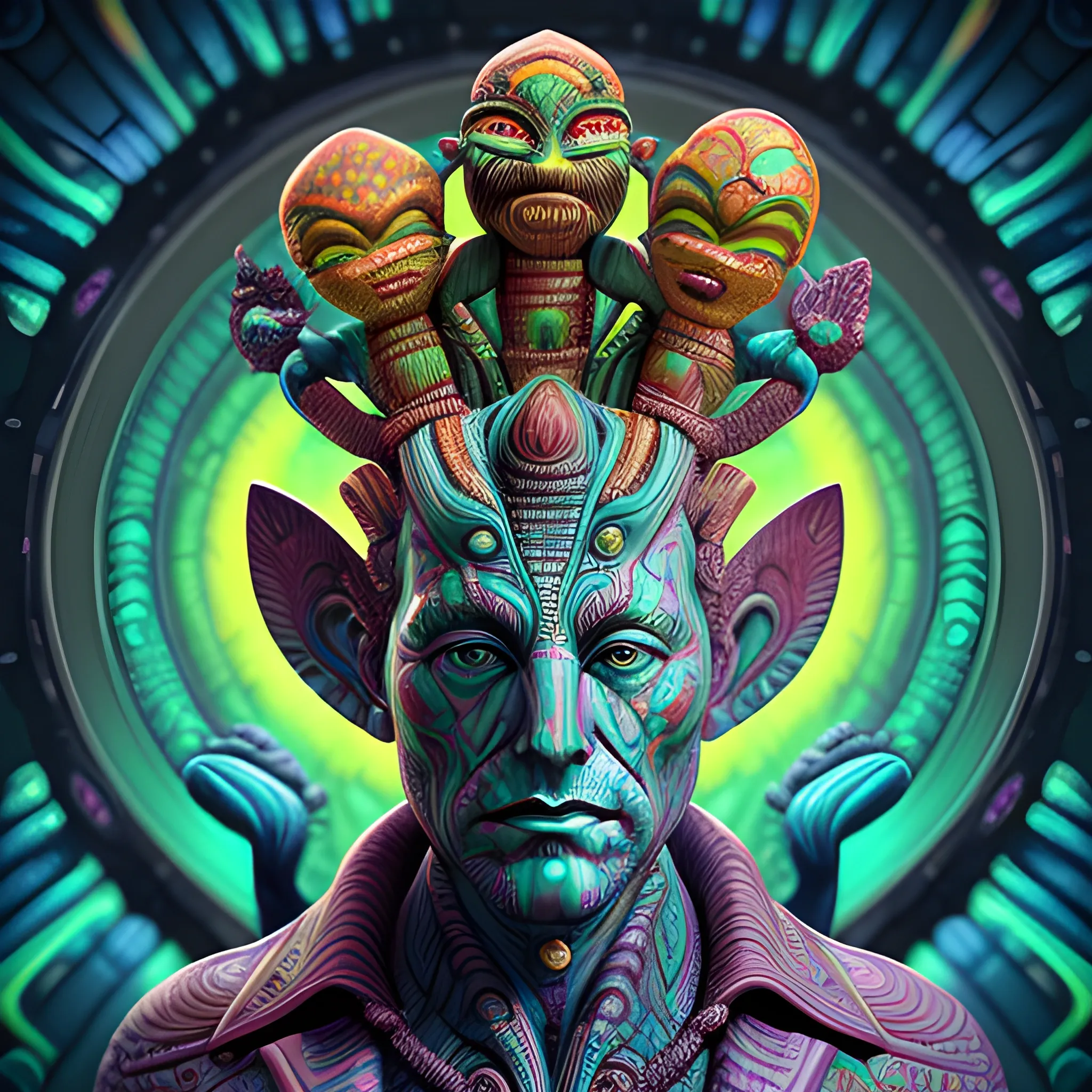
a surreal portrait statue of elon musk as a psychedelic tiki reptile stone god figure by naoto hattori , android jones , and chris dyer , deep bold colors , galactic dmt entity , depth of field , intricate beautiful painting , billions of details , octane render , portal , 8 k , detailed vector , trending on artstation , cgisociety , Cartoon , 3D ,
